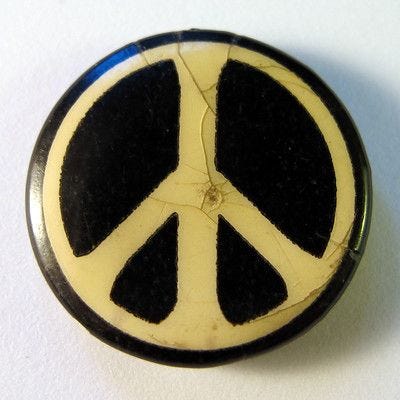“How can you study a system that you’re a part of?”
Field Study Participant, 2010
One of the voices in this ethnography is my own, which anthropologists accommodate under the label auto-ethnography to make room for autobiographical elements of doing ethnography. Conducting my study this way, I am both insider and outsider.
Including myself enables me to work with multiple layers of experience and awareness. The first layer is my curiosity about culture-wide hippie-shaming, because my experience is far from how the hippie critique has left us hanging in cultural disgrace.
One thing I found is that by investigating the misconceptions about the counterculture, I had to reconsider my own point of view.
Growing up as a hippie kid naturally biases me in favor of my clan. Throughout my life, I’ve always proudly confessed my childhood identity, often with an entertaining story about country life, hilarious behavior, or the meaning of the music. It was during the 1990s that I began to struggle with a sense of naiveté in my personal narrative. I was increasingly aware of a dismissive negative “vibe” toward hippies. I puzzled over the incongruity of my lived experience and what non-hippies think they know. I had to accept that we weren’t as hip as I believed. Explaining the reasons for my research, a former counterculture participant in Texas responded, “I’m surprised you even admit to being a hippie.” She reminded me of Newt Gingrich, who proclaimed hippies a national embarrassment.
An outright crusade to discredit the hippie counterculture is exactly what I found in my literature review. One of best explanations is from Theodore Roszak, who wrote The Making of a Counterculture in the 1969. In 2009, he published The Making of an Elder Culture: Reflections on the Future of America’s Most Audacious Generation. He describes the power elite think tank in Washington D.C. with the mission to conceive and execute misinformation against the counterculture. Their campaign was aimed at hippies and is effectively re-deployed on higher education (all those liberal arts professors!). More recently, aging baby boomers are a target. They’re the demographic that includes former and persistent hippies, all of whom are beginning to draw their federal retirement “entitlements” prepaid by all through our tax system.
A new conservative ideology was established in the 1980s and a major driver was the book, The Closing of the American Mind (1987) by neoconservative mastermind Allen Bloom. He set the agenda for right-wing attacks on hippies and on college professors for encouraging “the young” to protest, and launched the “failed counterculture” campaign that infused into mainstream culture. This is easily done through principles of propaganda and through pop culture, where the only evidence of hippies are stereotyped into a shaggy haired, colorfully clothed stoner dude like the character created by Tommy Chong*.
I feel that it’s an American imperative to understand how propaganda is weaponized by the hegemony. In middle school we should begin learning how this works. Propaganda disseminates non-truth to cause perceptual shifts on a massive scale. This is the effective tool that spins national belief about the “failed” counterculture and those ridiculous, irrelevant, dippy hippies.
Ironically, the literature shows that the counterculture did not fail. In fact, the movement continues to succeed through grassroots change in ways discussed in the Chapter One posts of this series. The ideas behind or iconography prevail. During the early 2000s, I remember walking through a consumer paradise parking lot carrying my re-useable shopping bags and noticed two curious bumper stickers. One read, “Consume Less, Share More” and another spelled “respect” with religious icons and the peace symbol. Inside the mall peace signs were everywhere, even emblazoned on the camo t-shirts. This cultural irony begs for understanding. I asked:
Why would “the powers that be” engage in a culture war against the counterculture movement?
It seems a simple explanation would suffice: the movement was an absolute threat to those at the helm of the hegemonic forces of capitalism. They don’t want people to spend and consume less. They don’t want people to share tools and resources. The movement to sustain, preserve, protect, use less, share, and recycle had to be crushed. It is here that I find personal and clan validation: the counterculture movement worked!
So this is an auto-ethnography. It’s a form of writing that Carolyn Ellis defines as using “the researcher's own experience as a topic of investigation in its own right, rather than seeming as if the study is written from nowhere by nobody.” Working this way enables me to articulate and understand what I could not as a child because I was culture bound, meaning I thought the reality of my world was the reality.
The return for a year of field work validated and explained experiences from my personal history as I re-encountered my childhood in the literature, literally, such as in the Mendocino Beacon and photo archives at the Kelley House Museum. Phrases and lingo that rolled off my mother’s tongue echoed from the pages of the underground press in Timothy Miller’s, The Hippies and American Values (1991). She frequently espoused the hippie credo, “If it feels good, do it, just as long as it doesn’t hurt anyone.”
There was usually a stack of periodicals such as Mother Earth News, Rolling Stone, Country Living, and the Whole Earth Catalogue on our redwood burl coffee table. It was the underground press through which she gleaned hippie philosophy.
Interviewing research participants who were my late mother’s close friends, I learned she first came to Comptche after responding to an ad placed in the LA Free Press in 1970 by another Comptche newcomer. In March of that year my newly divorced mother was moving with her four girls back to the land—from Topanga Canyon to Comptche, California, in a purple school bus. I was culture bound.
*Additional note of interest: Tommy Chong wrote The I Chong: Meditations From the Joint (2006) about his incarceration. The target of investigation since the Nixon administration, the relentless DEA finally got their man in 2003. Chong served 9 months in a correctional institution for selling marijuana paraphernalia.
References for this post:
Bloom, Allen, 1987
Ellis, Carolyn and Arthur Bochner, 2000
Hastrup, 1992
Okley, 1992
Miller, Timothy, 1991
Spradley, 1980
Up Next: Regional Topic: Comptche and Rural Communities






